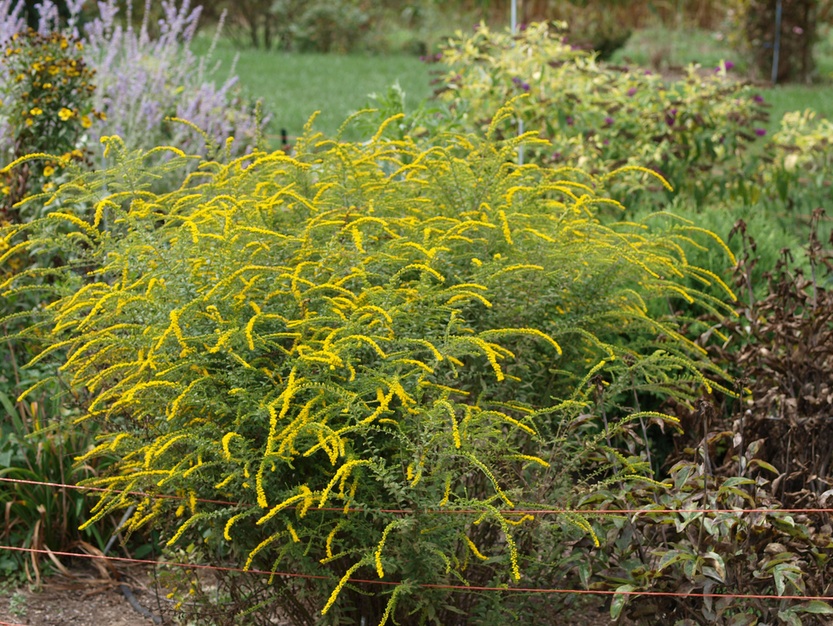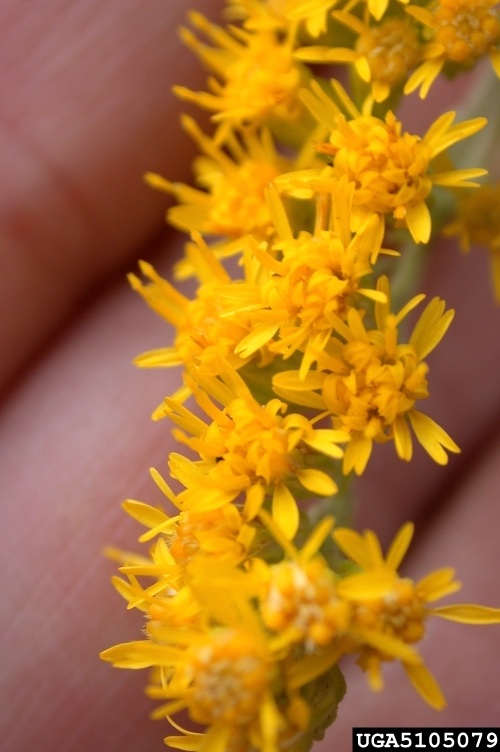October is a great month. Fall has finally arrived and with it comes cooler weather, football, and colorful trees. A great fall plant is the state flower of Nebraska, Goldenrod.
Goldenrod, Solidago rigida, is a native, perennial wildflower. This plant grows as a clump and can get up to 4 feet tall when blooming, depending on the variety chosen. The leaves are alternately arranged on the stem and are 4-12 inches long and lanceolate or oblong shaped. The flowers are typically a gold or yellow color and are often held in a rounded or flattened cluster at the top of the plant. Some species and varieties are more of a panicle flower and some have more of a corymb, but all are clusters of small flowers. Goldenrod is a member of the Aster, or Sunflower, family, so each individual flower is like a sunflower with a disk and ray flower.
There are many different goldenrod species and varieties to choose from. According to the University of Minnesota Extension, there are over 60 species of goldenrod found in the northeast and north central parts of North America. One of the most common cultivars of Solidago rigida is ‘Fireworks’. This variety makes a great impact on your landscape late into the fall. Fireworks blooms in late August to October and it looks like an explosion of fireworks, hence the name. If you don’t have the space for a large Goldenrod, you can choose Solidago sphacelata ‘Golden Fleece’ which only grows up to 1.5 feet tall and wide. It is a great, compact choice for gold color in the fall.
Goldenrod is a native plant, so it can grow with little management. It prefers full sun and many different soil moisture levels, but it will tolerate light shade and poor quality, dry soils. Because this plant gets large with heavy flowers on top, it may require staking to keep it upright. Goldenrod does well in wildflower gardens or as an accent in any landscape setting. It will also grow well in pastures. It has very deep roots that allow it to survive overgrazing and disturbances. It is often used as a roadside plant to give the ditches color into the fall months.
Many people confuse allergy problems in the fall with goldenrod. Because this plant is utilized in roadsides, it is often thought of as a weed. Goldenrod blooms at the same time as ragweed in the fall so people think that their hay fever problems in the fall is due to goldenrod which they see blooming, when it is actually due to ragweed with non-descript flowers. Goldenrod is a great plant for pollinators because the flowers attract insects with the color and the pollen is heavy and sticks to insects, according to the University of Illinois Extension. Ragweed has light pollen that flies in the wind while goldenrod pollen is too heavy to fly through the wind. So the allergy culprit is the ragweed, not goldenrod.
Goldenrod is a great plant for any landscape setting or native prairie. This is a great native plant that will tolerate most any soil and moisture situations. It blooms later into the fall, especially ‘Fireworks’, which is one of the last goldenrods to flower in the fall. So the next time you look to plant another plant for fall color, choose a native plant, choose Goldenrod.


